Underground Mushroom Co.
The art and science of growing mushrooms, a killer “crab cake” recipe, and how you can grow your own
Can we agree that mushrooms are an odd food? Fungi don’t fit into the plant or animal kingdoms like most other natural edibles. In the right environment—think damp and shady—they inhabit tree trunks, otherwise perfect lawns, and sometimes even indoors (picture a shag rug in a humid basement). Sporting gills, round and flat caps, brown or yellowish hues, and cylindrical stems, mushrooms can look quite alien.
Imagine the brave people who first tried eating toadstools. Of course, people are prone to try everything and see what nourishes versus sickens them, often with extreme hunger driving their behavior.
Despite all their oddities, mushrooms have become an “it” food. More chefs and cooks look to mushrooms to bring an umami kick to risotto, burgers, soups, stews, stir fries, and other foods. A wide variety of mushrooms beyond the button and portobello types can be found in mainstream grocery stores. Plus, scientists are learning more about the health and cognitive benefits of mushrooms including antioxidant, anti-inflammatory, and anticancer properties.
Mycologists are looking at mycelium—mushroom root material—as a solution for more sustainable packaging and industrial and consumer products. And then there’s a resurgence of interest in psychedelic mushrooms. Nope, I haven’t and don’t plan to try them, but they are being cited as a great help for people struggling with addiction, PTSD, and other mental health issues.
So, I was excited to learn about a nearby mushroom growing business. I first spotted Underground Mushroom Co.’s “bouquets” at the Rockport Farmer’s Market last fall and met Matt Pinstein, the enterprise’s founder, chief mushroom farmer, marketer, and seller. I wanted to know more and arranged to visit his mushroom farm. And when I use the term farm, dismiss any vision of acreage and tractors.
Underground Mushroom Co.’s “farm” is a few rooms in an industrial marine space that’s a short walk from Don Gorvett’s studio—read my interview with Don here—and the North Shore Arts Association. While Matt is growing mushrooms, his neighbors are repairing boats and providing other services to the local fishing industry.
Founding his own mushroom business was a logical next step for Matt. After studying sustainable agriculture at UMass, he worked on a vineyard in the Willamette Valley in Oregon and then at an olive farm in Italy. From there, he went to Hawaii to grow coffee and live “off the grid” on a 16-acre farm. Surviving off the grid meant that a solar panel powered his refrigerator. In lieu of plumbing, there was an outhouse. As he recalls, “We all had Costco cards, but we were living pretty close to the land.”
When a volcanic eruption ended that job, Matt then worked on a fishing boat in Alaska for a bit before returning to his hometown of Manchester, MA. At that point, while many of you were baking crusty loaves of bread as pandemic entertainment, Matt was trying his hand at growing mushrooms. Small-scale success motivated Matt to launch a mushroom business.
He moved the operation from his kitchen and set up an environment and equipment conducive to mushroom growing. Matt walked me through the space to learn what’s involved in coaxing alien-looking mushrooms to practically burst from a bag of sawdust and specific grains under carefully controlled conditions.
The space is outfitted with reclaimed materials, such as lobster pools that came with the space and that Matt has refashioned into a mushroom fruiting room. The front entrance is a medley of recycled door parts from other entrances. The heaters and humidfiers are cacophonous. I admire Matt’s resourcefulness, noise tolerance, and enthusiasm for the growing process in addition to the end product.
The technical term for the way Matt grows mushrooms is “spawn to bulk,” which involves adding special types of grains to a substrate in a carefully controlled set of steps.
Matt starts by compounding precise amounts of hardwood or soy hulls and water in plastic bags. The technical term for the bags is blocks that contain the substrate on which the mushrooms will grow.
He sterilizes the blocks with steam. Sterilizing kills microbes, competing fungi, mold spores, and bacteria. Next, he “inoculates” the blocks with “grain spawn,” which are essentially “seeds” for growing mushrooms. Grain spawn is made from grains, such as rye berries, that are mixed with “mycelium.”
After adding the grain spawn to the blocks, Matt heat seals the bags and agitates the mixture within. He then stores the bags on shelves in what he calls the “colonization room.” That room needs to maintain a temperature between 65 to 70 degrees. Below that range, the mushrooms grow too slowly, and above it the mushrooms grow too fast, making it difficult to keep up with the production.
Now it’s time for mushrooms to start growing. After a couple days, the mushrooms emerge initially as a web.
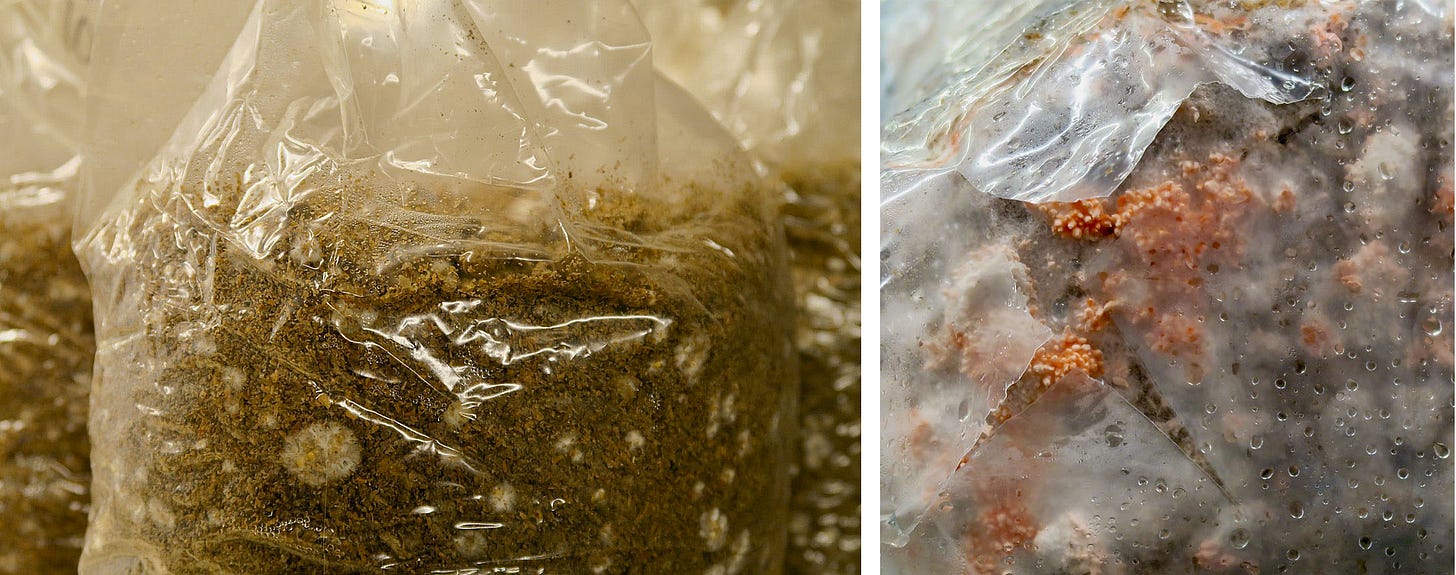
After 10 to 15 days in the colonization room, the mushrooms are ready for fruiting. That’s when Matt moves the blocks into a room with the humidity and carbon dioxide levels optimized to encourage the mushrooms to grow; mushrooms “breathe” oxygen, and if the carbon dioxide level is too high, they don’t thrive. During this phase of work, Matt dons a mask to prevent inhaling spores in the air.
This is when things get exciting. Matt explains that the mushrooms sense where there is high humidity and grow toward it, just the way leafy plants grow toward the sun. The black pearl king oyster mushrooms double in size every day! Five to 15 days later, the mushrooms are ready for harvesting.
Matt cuts the mushrooms off the blocks and arranges them in aesthetic packaging for markets or delivers them to chefs. He also provides mushrooms to Nourishing the North Shore for distribution to food pantries, mobile markets, and meal programs. Matt may coax a second harvest from a block. He brings depleted blocks to Iron Ox Farm to be composted.
Tending to mushrooms is time-consuming, given that he’s harvesting mushrooms from 60 to 70 bags a week, starting a new batch of that size, and tending to the other batches in various stages of production. “I swapped the nine to five for a 24/7,” Matt jokes, referring to the fact that he will often be working at the facility three different times in a day because of how quickly the mushrooms grow. But the freedom of entrepreneurship outweighs the time demands of his mycological friends. “I wanted the independence. I'm 43, and I wanted to step out and create something for myself.”
Here’s what else I learned chatting with Matt:
How long does it take to grow a crop of mushrooms?
Oyster mushrooms, such as king oyster mushrooms, and lion’s mane take 25 to 30 days. Shiitakes and chestnuts take four to six weeks.
Is your growing process similar to large industrial processes?
No. A lot of mushrooms you buy at the grocery store are grown on a 30-day conveyor belt. In a factory, they lay out the substrate, sterilize it, inoculate it, and this conveyor belt goes through an entire football field-sized warehouse. And at the very end, somebody clips off the mushrooms to harvest them.
How does mushroom farming align with your original interest in sustainable agriculture?
I studied sustainable agriculture and food systems in college, and one of the things that really appealed to me about mushroom growing is that the input is so minimal. What I mean by that is, think about what it takes to grow a cow with all the feeding. It’s resource-intensive. Whereas mushrooms take sawdust, decompose it, and give you this food source. As far as sustainability is concerned, that's as good as it gets.
Apple growers say the Honeycrisp is the star. What mushroom is your star?
King oyster mushrooms are similar to a scallop when you slice them and cook them. But the star of my show lately has been the lion's mane mushroom because it looks like this beautiful snowball. I put it in front of chefs and it sells itself.
Lion's mane has been really popular with local restaurants. I take it as a point of pride for my mushrooms to be on menus at nice restaurants throughout the area. I really enjoy working with local chefs.
There's also a lot of buzz about lion’s mane mushrooms because they are said to improve brain health and cognition. Some people and companies make them into a tincture than can be added to coffee.
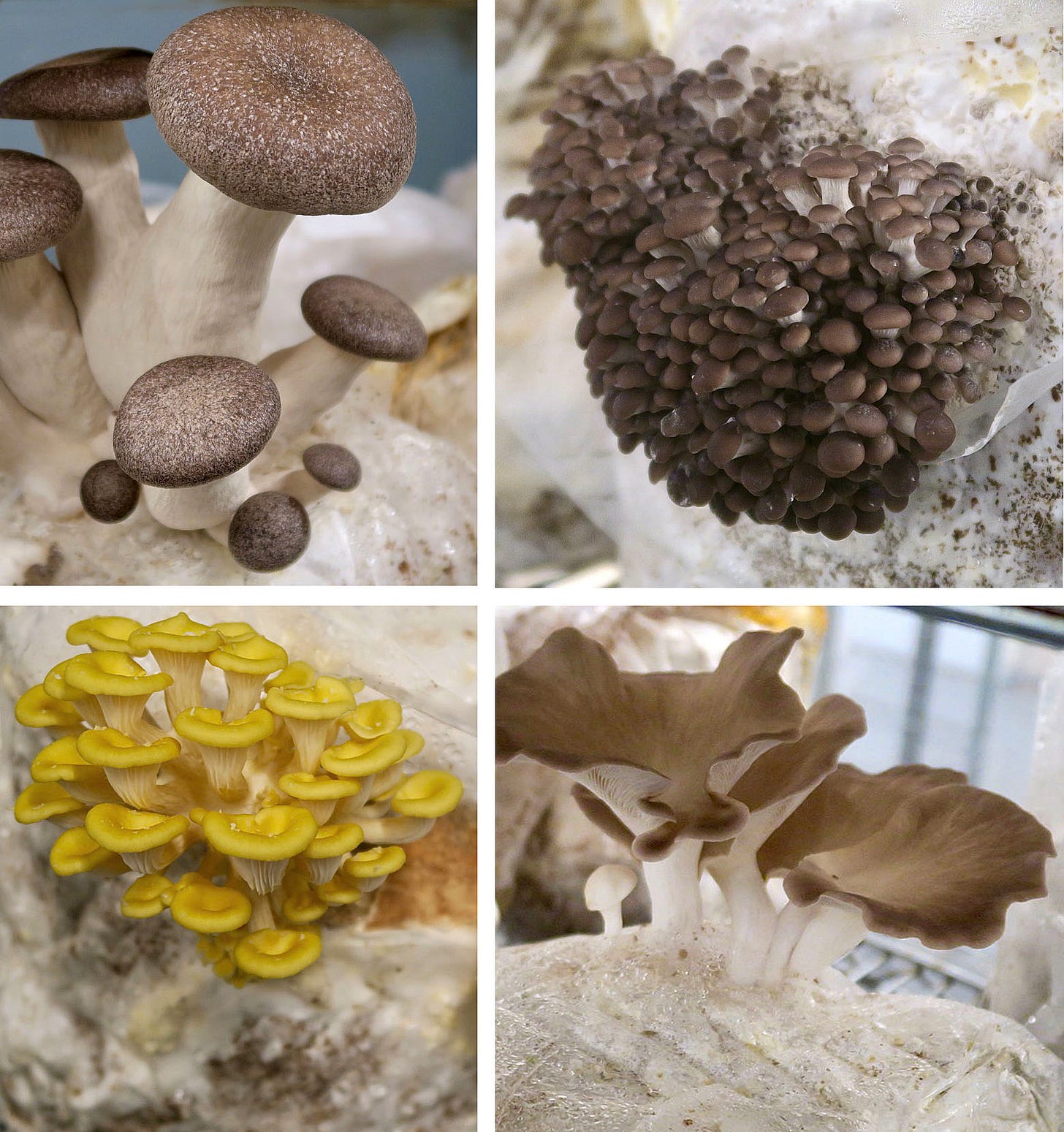
Tell me about the “myco” buoy project you are working on.
Sue Van Hook, who is a mycologist, developed a sustainable and environmentally conscious alternative lobster buoy. [Fun coincidence: Sue is the wife of painter George Van Hook, who I wrote about here.] The buoys are made with a reishi [a strain of mushroom] mycelium that's grown on straw. She cuts the bottom of a two-liter soda bottle, runs a rope through it, and then packs the straw and grain spawn in there, and it forms this myco buoy. She’s also working on making channel markers and mooring balls.
She's yet to develop a sealant that really holds up to ocean saltwater and cold temperatures. I’m meeting with folks that develop eco-friendly sealants and we will experiment with the sealants here. Fishermen here on Cape Ann can use them and we will monitor how they hold up and for how long. [The project also makes it possible for Matt’s operation to be cited in a marine industrial zoning area. Another project on the horizon is growing alternative lobster bait.]
There’s so much potential for mycelium. It’s being used for packaging and you'll see sofas made out of it soon enough.
Tell me about your home growing kits.
People can grow their own lion’s mane and various types of oyster mushooms at home. [No, you don’t need your own fruiting room or carbon dioxide monitor, Matt assured me.] They are five-pound blocks that will produce one pound of mushrooms. You put the block in indirect sunlight, make a cut in the bag, and water it three times a day with a spray mister. The mushrooms will grow in five to 10 days and will double in size every day, which makes it a fun project.
With the farmer's market season wrapped up, how can people get your mushrooms?
They can join the online CSA and pick up mushrooms at Vidalias in Beverly Farms on Wednesdays and we deliver in Cape Ann too. Check Matt’s Instagram for updates.
When you bring mushrooms home, what are your favorite ways to prepare them?
The Hungarian mushroom soup recipe from The Moosewood Cookbook is best recipe I've found for that soup. I put black pearl oyster mushrooms in it. I also love to make mushroom risotto.
Another favorite recipe is lion's mane crab cakes. When you put a head of lion's mane in a blender, it breaks it into strings that look like crab meat.
Matt usually throws the crab cakes together freestyle, but here’s a recipe we assembled for you:
Lion’s mane crab cakes
Ingredients
1 lb lion’s mane mushrooms
1 medium tomato, roughly chopped
½ onion, diced
½ red bell pepper, diced
¾ cup panko breadcrumbs
1 egg or egg replacer
2-3 tablespoons mayonnaise
Salt and pepper to taste
Olive oil or other cooking oil of your choice
Matt recommends topping the cakes with avocado cilantro aioli
Directions
1. Put the lion’s mane mushrooms in blender to chop. Transfer to a large bowl and set aside.
2. Rinse blender, then add tomato, onion, and bell pepper and blend to chop them. Pour blended vegetables into a strainer to remove the liquid.
3. Add the blended vegetable mixture to the bowl of lion’s mane mushrooms, then mix in the breadcrumbs, egg, mayonnaise, salt, and pepper. Form patties and place them on a parchment-lined plate.
4. Heat a skillet with a tablespoon of olive oil until it sizzles when you add a drop of water. Sautee the patties until golden brown, flip them, and then serve immediately with topping of your choice.
Lightening round
What's your most memorable meal?
When I was living in Italy, we went to the restaurant Le Cime located on a mountainside in Ronciglione. They specialized in local boar. I had homemade pasta with truffle oil and local cheese. We also had antipasti with smoked boar of different types, fresh-made bread, and deep-fried zucchini flowers.
Most captivating art viewing experience.
Going to the Vatican and seeing the Pietà. It was incredible to see what could be carved out of marble.
Palate & Palette menu
Here’s what I would serve if Matt and his girlfriend came to dinner, which they are invited to do:
Green salad with truffle vinaigrette
Mushroom carnitas tacos
Mushroom bourguignon with fresh paparadelle
Mushroom spiked chocolate tahini mousse
Where to find Underground Mushroom Co.
undergroundmushroom.com
@undergroundmushroom.co
If you liked this story…
Show your appreciation by clicking the like heart button below—I’d love to know you enjoyed it.
Forward this to a friend and encourage them to subscribe.
See more than 60 stories about art and food at palateandpalette.substack.com.




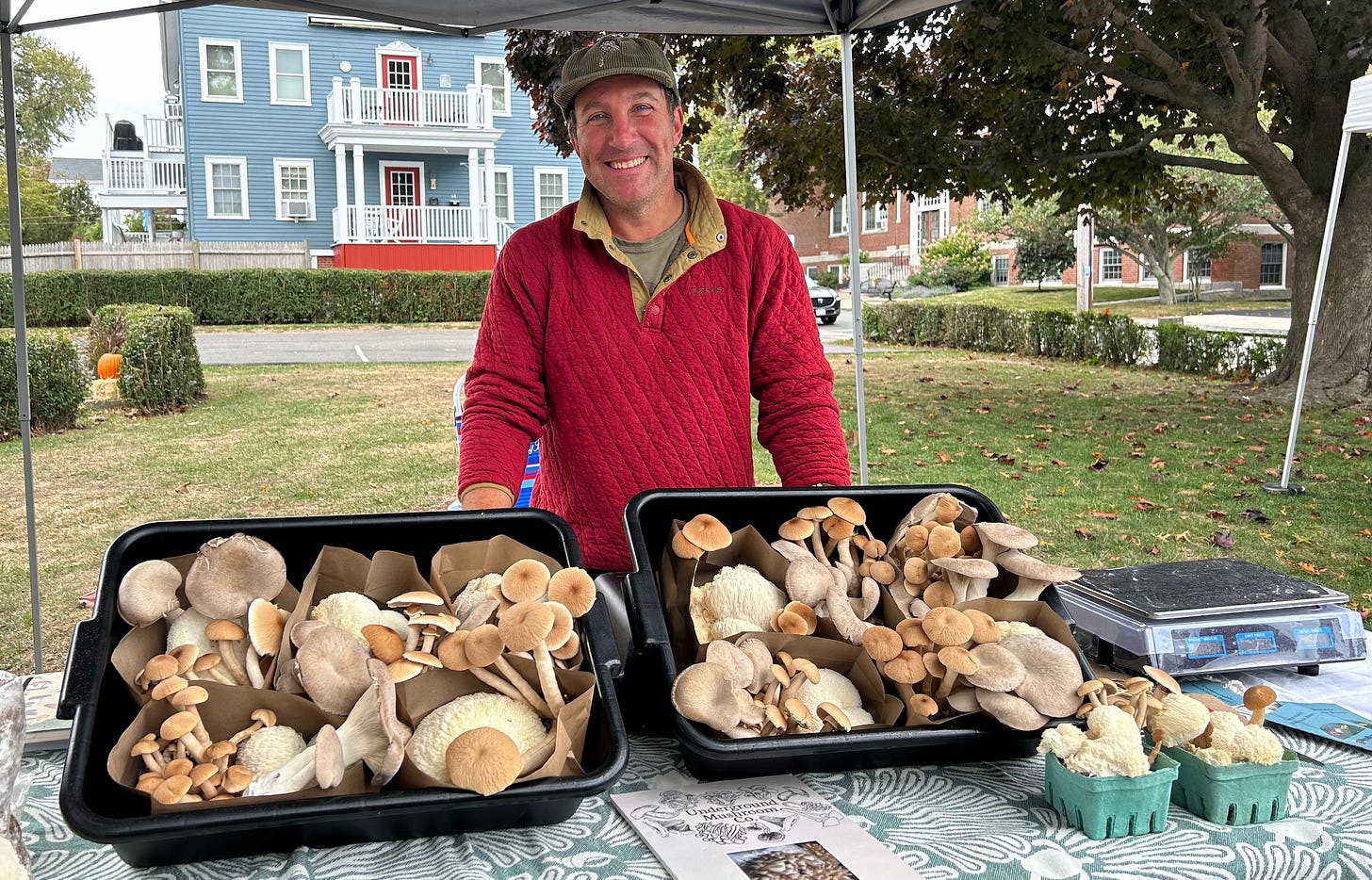


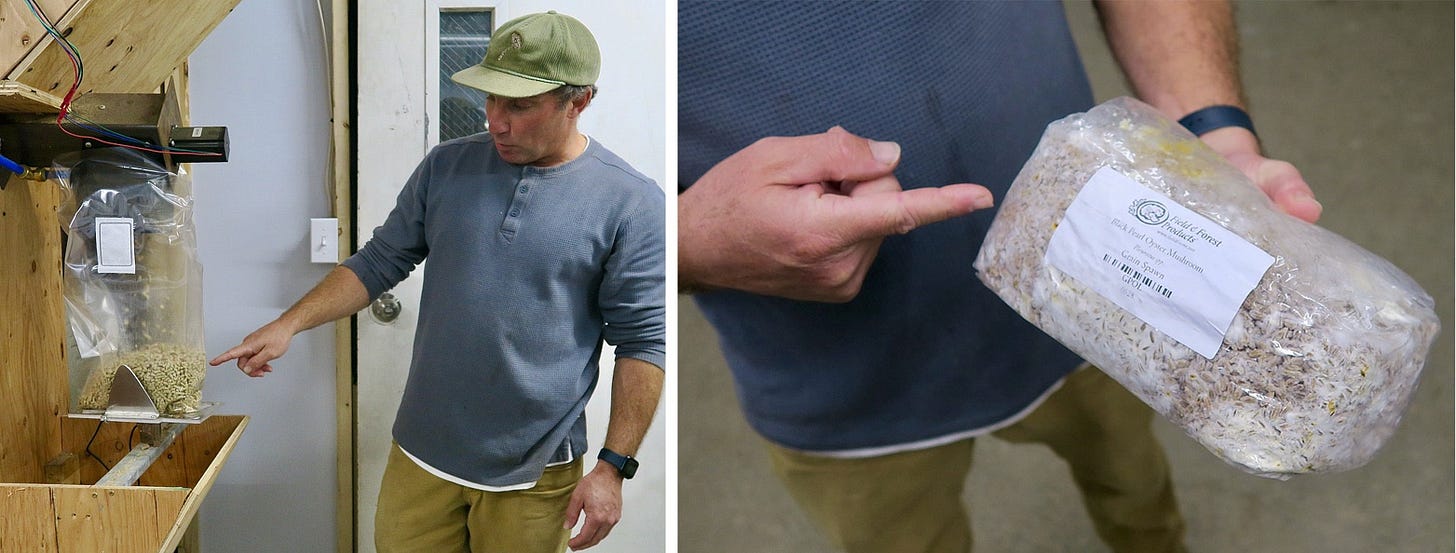

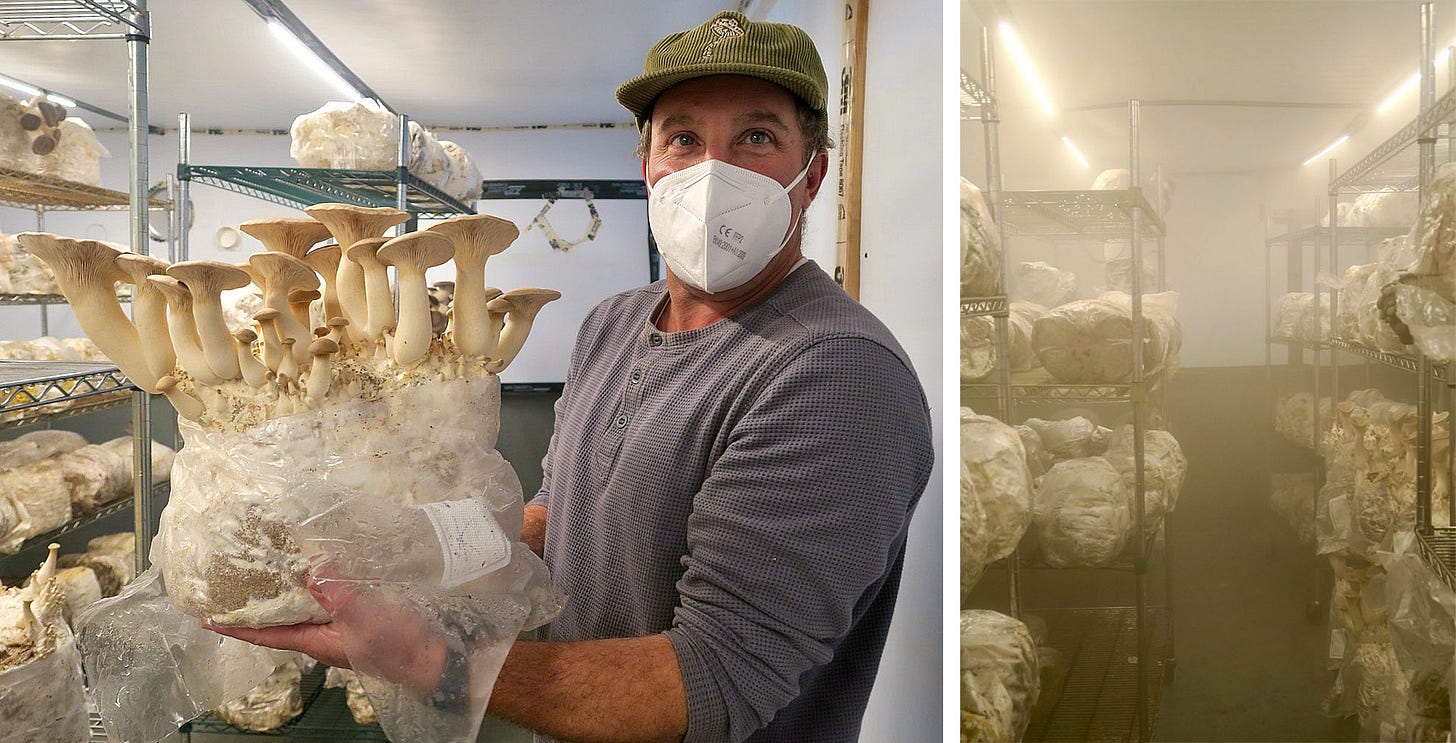
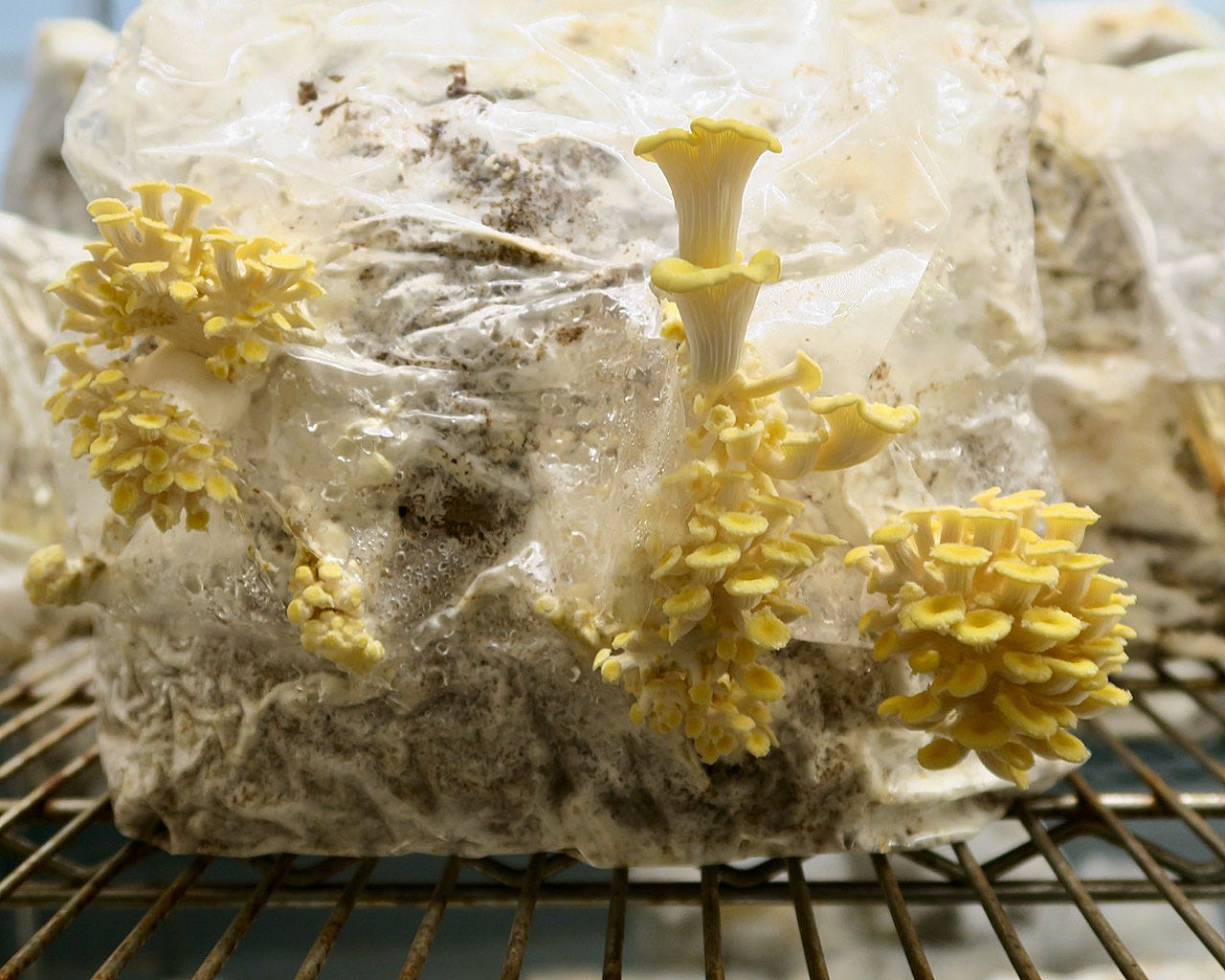
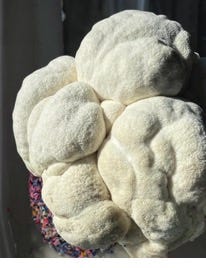
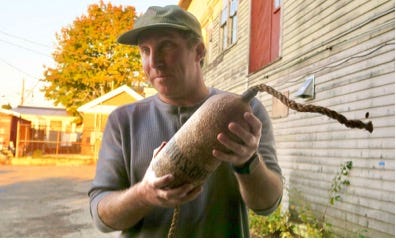

Love mushrooms and this is a very informative and fun read!
This was truly a five-star article, dear author! Beautifully written, informative, and enticing! Now I am determined to find Lion's Manes and cook with them (and P.S. my wholistic veterinarian recommended these mushrooms for my pooch!) Thanks for this offering, Amy, AND for the recipe!